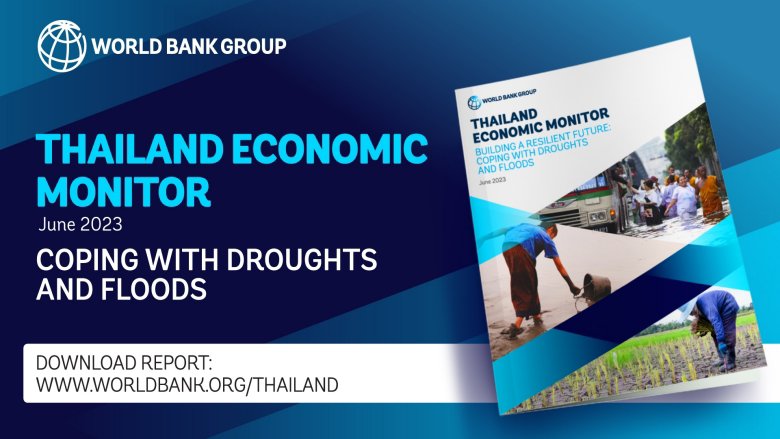
Download the report
Thailand’s Economy
- Economic growth rebounded in the first quarter of 2023 by 4.5% due to domestic demand and tourism but still trailed behind peers due to external challenges.
- Growth is projected to accelerate from 2.6% in 2022 to 3.9% in 2023 due to stronger-than-expected external demand, especially in China, Europe, and the US, as well as private consumption growth, and tourism recovery.
- The current account balance is expected to reverse from its deficit of the past two years and return to positive territory in 2023 at 2.5% of GDP due to both goods and services trade.
- Headline inflation is projected to moderate to 2% in 2023, below most emerging markets amid easing global energy prices, price caps and below-potential growth.
- Public debt is projected to peak at slightly above 60% in the medium term.
- Fiscal responses to high energy price have supported the recovery but slowed the path to consolidation, while a long political transition may slow public investment.
- Labor market conditions have improved due to the recovery of sectors related to tourism, trade and hospitality. The unemployment rate stood at 1.1%, down from 1.5% in the same quarter last year.
Coping with Floods and Droughts
- In recent decades, Thailand has been subjected to frequent floods and droughts. It ranks ninth globally in the INFORM index of risks from floods, below Vietnam, Myanmar and Cambodia. Bangkok and the export industries around it remain especially vulnerable to flooding, despite the introduction of flood control measures. The macroeconomic costs of floods will grow. A 1-in-50 year flood (like the 2011 floods) in 2030 would cost more than 10 percent of GDP in lost production.
- Thailand also frequently suffers from droughts resulting from shortage of rainfall, reduced flow in surface and sub-surface rivers, and poor land management practices. The entire country was affected by severe droughts in 1979, 1994, and 1999. The northeastern region of Thailand, which has the highest poverty rates, is particularly vulnerable to drought.
- Progress has been made to better cope with floods and droughts but certain challenges remain including an incomplete Water Resources Act 2018, a fragmented institutional landscape, and funding and staffing challenges which impact provision of services as well as proper operation and maintenance of aging infrastructure.
- Robust cost-benefit assessments are needed to identify and prioritize suitable flood and drought prevention measures. Measures should include both infrastructure investments and softer ones, such as effective early warning and community-based adaptation systems.
- In order to better cope with floods and droughts, the report recommends a more robust framework for effective climate adaptation including creating an enabling environment, prioritizing risk mitigation planning, investing in water resources infrastructure, and controlling land and water use. The latest advancements to improve water use efficiency, promote a circular economy, and integrate nature-based solutions can also significantly contribute to enhancing resilience to floods and droughts.